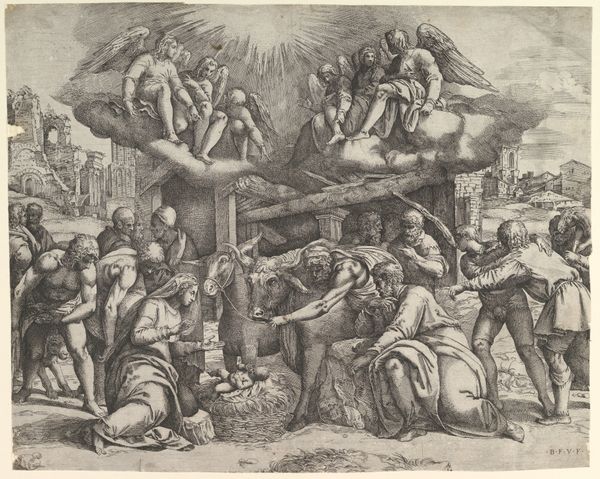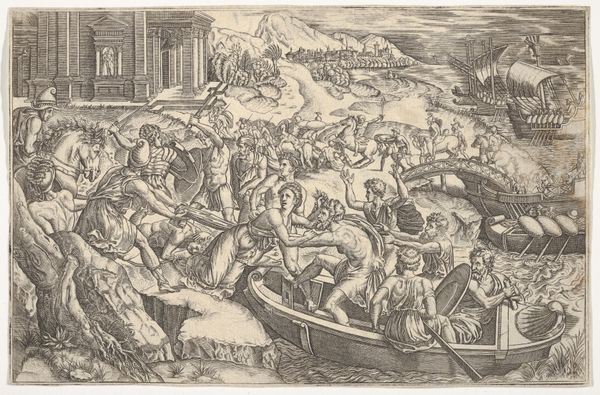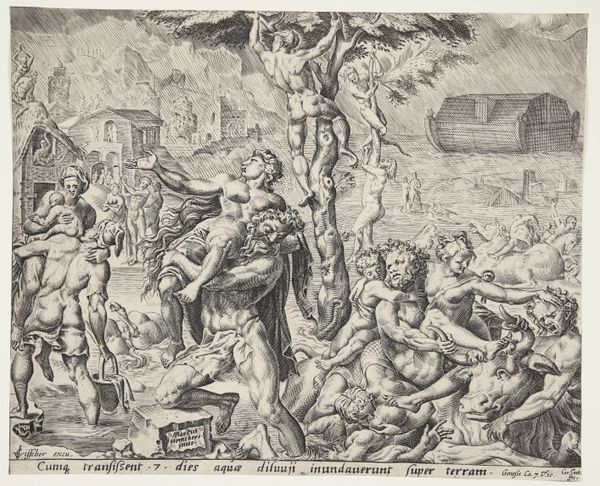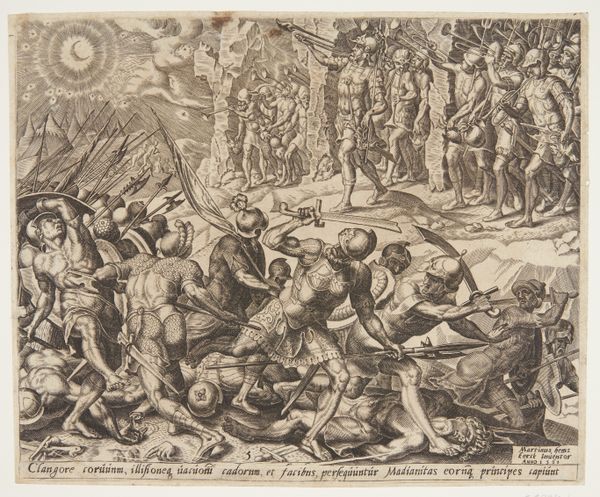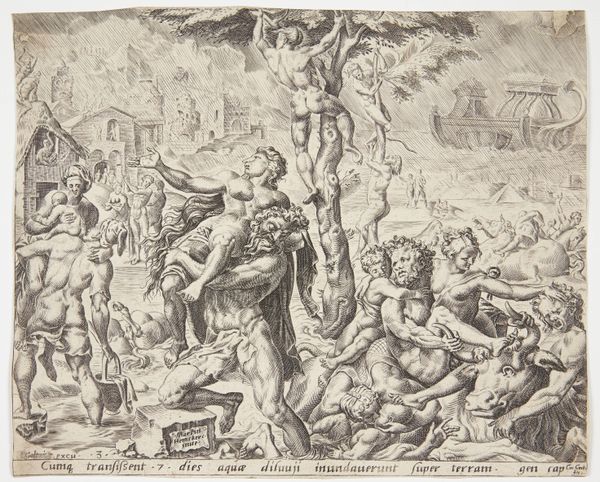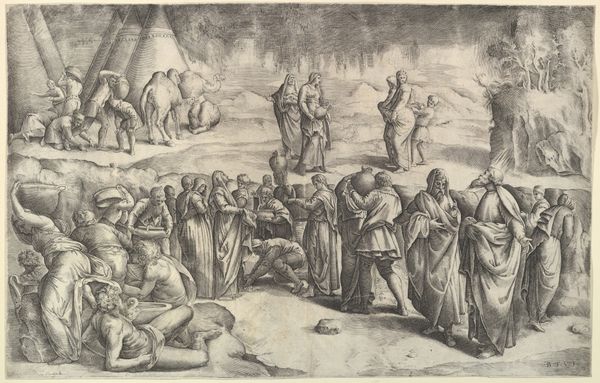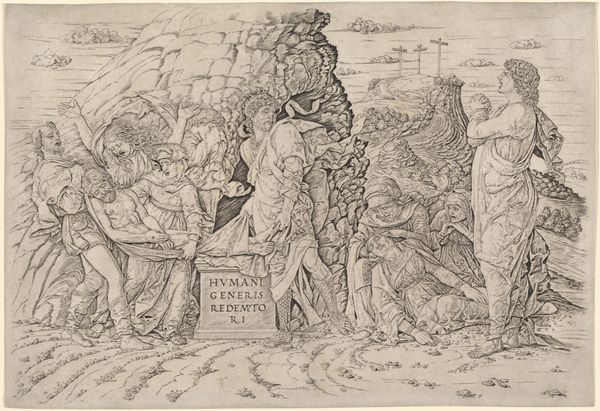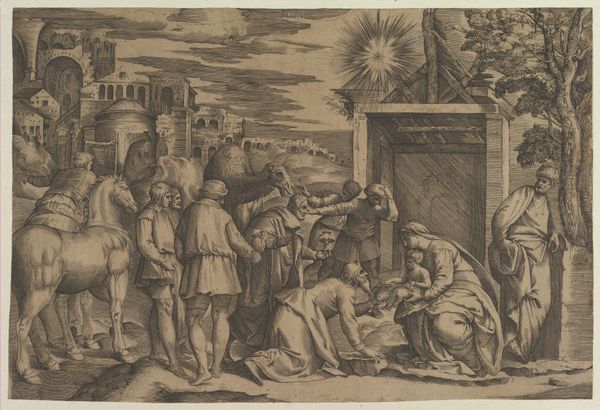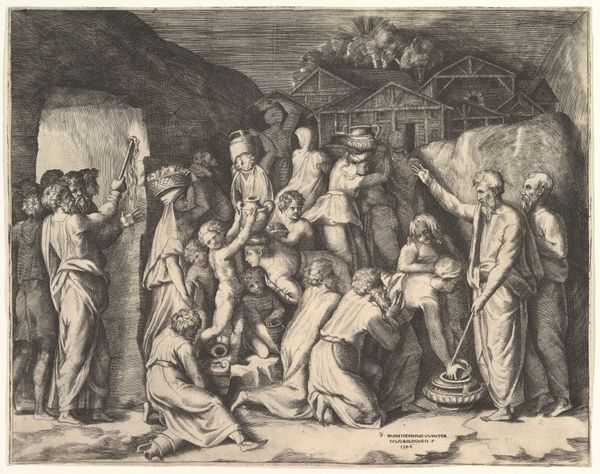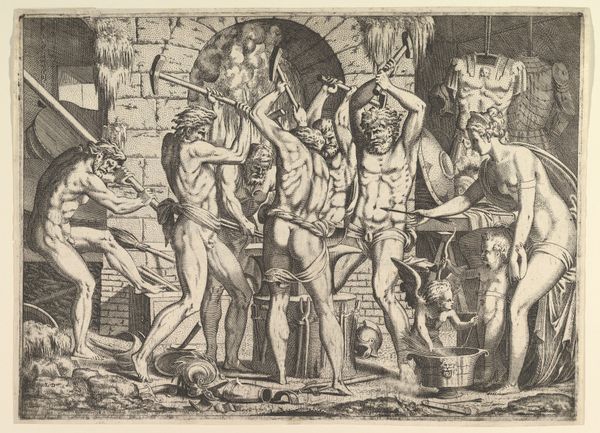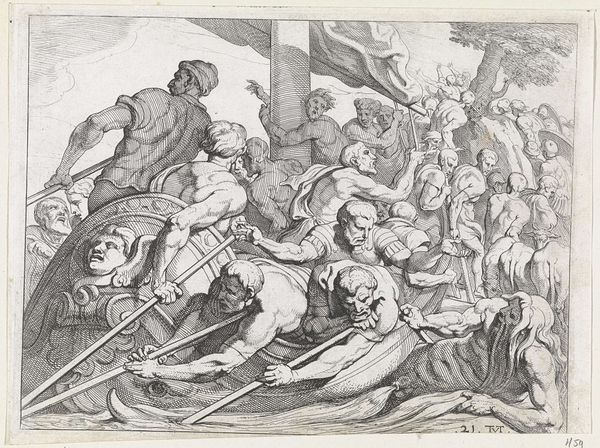
The Adoration of the Shepherds with angels overhead 1525 - 1566
0:00
0:00
Dimensions: Sheet (Trimmed): 14 1/2 × 20 3/16 in. (36.8 × 51.3 cm)
Copyright: Public Domain
Curator: This is Battista Franco’s “The Adoration of the Shepherds with angels overhead,” likely created between 1525 and 1566. It’s an etching, rendered in ink, now residing at The Metropolitan Museum of Art. Editor: Immediately, the stark monochrome and busy composition strike me as quite theatrical. The angels feel somewhat removed, observing a world heavy with the tangible concerns of earthly existence. Curator: Indeed, Franco employs a sophisticated use of line and light to establish this contrast. The etching technique allows for a remarkable level of detail, delineating individual features and folds in the fabric, contributing to the overall drama of the scene. Observe the dense cross-hatching in shadow. Editor: And it's a carefully constructed drama, positioning the adoration of shepherds against the backdrop of sociopolitical turmoil. This depiction underscores the humble origins of Christ. One must recognize how narratives like these operate—sanctioning divinely ordained social structures. Are the poor celebrated, or is poverty made holy and inescapable? Curator: But isn't that a consequence of imposing contemporary thought onto a work created centuries before modern social theory? Instead, we can recognize the composition and its relation to mannerist spatial conventions—a conscious manipulation of perspective and depth—drawing our eye across multiple registers in this symbolic hierarchy from the celestial realm above, down to the earthly tableau below. Editor: These scenes have always been used for both teaching and for the benefit of the ruling elite. Battista’s piece must be seen through that lens, to understand the subtle ways in which religious institutions controlled society at that moment in history. Even that tiny babe had political ramifications. Curator: I grant you its historical context. However, let's not ignore the artist’s technique and intention as well. See the artist’s deployment of light, radiating from the infant, illuminating the faces of the shepherds and angels— Editor: I'd suggest those aesthetic and formal components do much more than illustrate the divine light. It offers a view into the power dynamics inherent in religious devotion and structures. Curator: Fair enough, perhaps we each perceive a different facet of the artist's labor, revealed through the centuries. Editor: Precisely. Battista is long gone, and this remarkable image, it remains for us to ponder how history may speak through us.
Comments
No comments
Be the first to comment and join the conversation on the ultimate creative platform.
